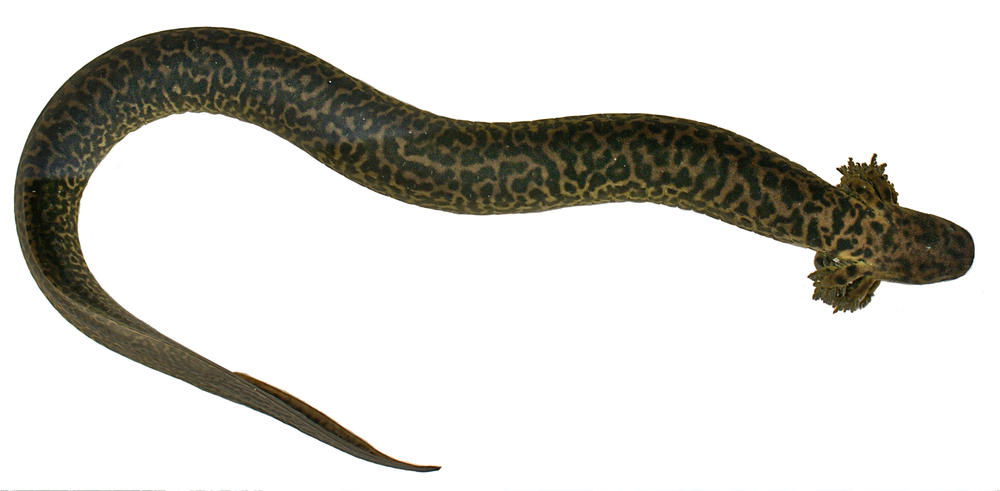Section Branding
Header Content
Southern Salamander Discovered As New Species
Primary Content
A southern salamander that was once the stuff of rumor and legend has now been found to be a new species.
The reticulated siren is one of a small but distinctive group of amphibians called, as the name suggests, sirens. And though you may have never seen one, they are abundant in the Southeast, particularly in the wetlands of the Gulf Coast.
Southern Salamander Discovered As New Species
But as well-known as other sirens are, the reticulated siren was sort of the Moby Dick of the siren world, talked about but seldom seen. For years it was known by its common name, the leopard eel. It got the name by virtue of its length, which extends up to 2 feet, its eel like shape, its bushy gills and the leopard like spots down its body. Unlike an eel, though, it has forelimbs.
Until recently, it was mostly known from a single museum specimen at Auburn University. That’s where Georgia Department of Natural Resources herpetologist John Jensen first saw the creature as a student. Then, no one knew if it was just a weird example of a known animal or something else entirely. One night in 1994 he had an experience with the animal that only burnished its legend.
Jensen was working at the time as a wildlife biologist at Eglin Air Force Base in the Florida Panhandle. A personal quest of his was finding another rare animal, the rainbow snake. When Tropical Storm Alberto stalled out over the area, Jensen thought he’d see if the rain would flood a road between a sinkhole lake and a marsh he had been in the habit of checking every now and then for the rainbow snake. What he found instead floored him.
“I saw hundreds of them that night. Just squirming,” Jensen said.
It was the leopard eel he saw in the hundreds, mixed in with two other types of sirens. They were in a mass writhing in the water pouring over the road way.
“And I was just blown away by what I was looking at,” Jensen said.
He collected a few of the animals he remembered from the specimen jar at Auburn and shared them with another biologist at the University of Florida. And there they sat. After that the reticulated siren story grew cold.
But Jensen’s story got shared around the small community of leopard eel devotees, including Sean Graham, now at Sul Roll University in Texas. He credits hearing Jensen’s story as one of the things that over the years kept him on the trail of the creature, eventually leading him to capture his own samples of the animal which is its own epic tale. Then, with David Steen of the Georgia Sea Turtle Center, Graham sequenced the salamander’s genome to prove that it was indeed a new species to science.
Graham and Steen’s paper is published in the online journal Plos One.
John Jensen hopes to get his hands on the salamanders he collected in 1994 again. He remembers some of them being longer than the 2-foot animal Graham collected and he would like to add to the description of the reticulated siren. Meanwhile, as Jensen continues monitoring the health of Georgia’s reptiles and amphibians and other non-game animals, he’s still on the lookout for the creature he was out to find over two decades ago, the rainbow snake.


